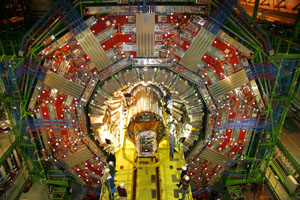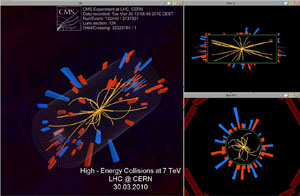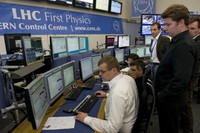Scientists Cheer Restart of "World's Largest Physics Experiment" in Switzerland
Almost two years ago, Rutgers physicists joined the world’s scientific community to celebrate the startup of “the world’s largest physics experiment” – a European particle accelerator designed to reveal some of nature’s most basic subatomic particles.

Rutgers researchers made good use of the downtime, and as a result, feel more prepared than ever to conduct groundbreaking physics research now that the machine has begun smashing protons together at world-record energy levels. The LHC’s 27 kilometer particle racetrack started running again last November and on March 30 marked its first collisions at 7 trillion electron volts – its operating level for the next two years of experiments.
“Ordinarily you don’t get an extra year to prepare,” said Amitabh Lath, an associate professor in the Department of Physics and Astronomy, School of Arts and Sciences, reflecting on how physicists at Rutgers and elsewhere used the machine’s downtime to refine techniques for gathering and analyzing data.

Lath noted that this “tune-up” work would have happened whether or not the LHC suffered its unfortunate outage. Two decades earlier at Fermilab’s Tevatron accelerator near Chicago, physicists refined their data-gathering techniques as the accelerator ran, which meant that they couldn’t have full confidence in their early results.
Yet Rutgers felt a downside to the LHC’s delay, admits Lath. Student work got postponed. “We have two doctoral students who started in 2005, and they may not finish until 2011,” he said.

Media Contact: Carl Blesch
732-932-7084 x616
E-mail: cblesch@ur.rutgers.edu